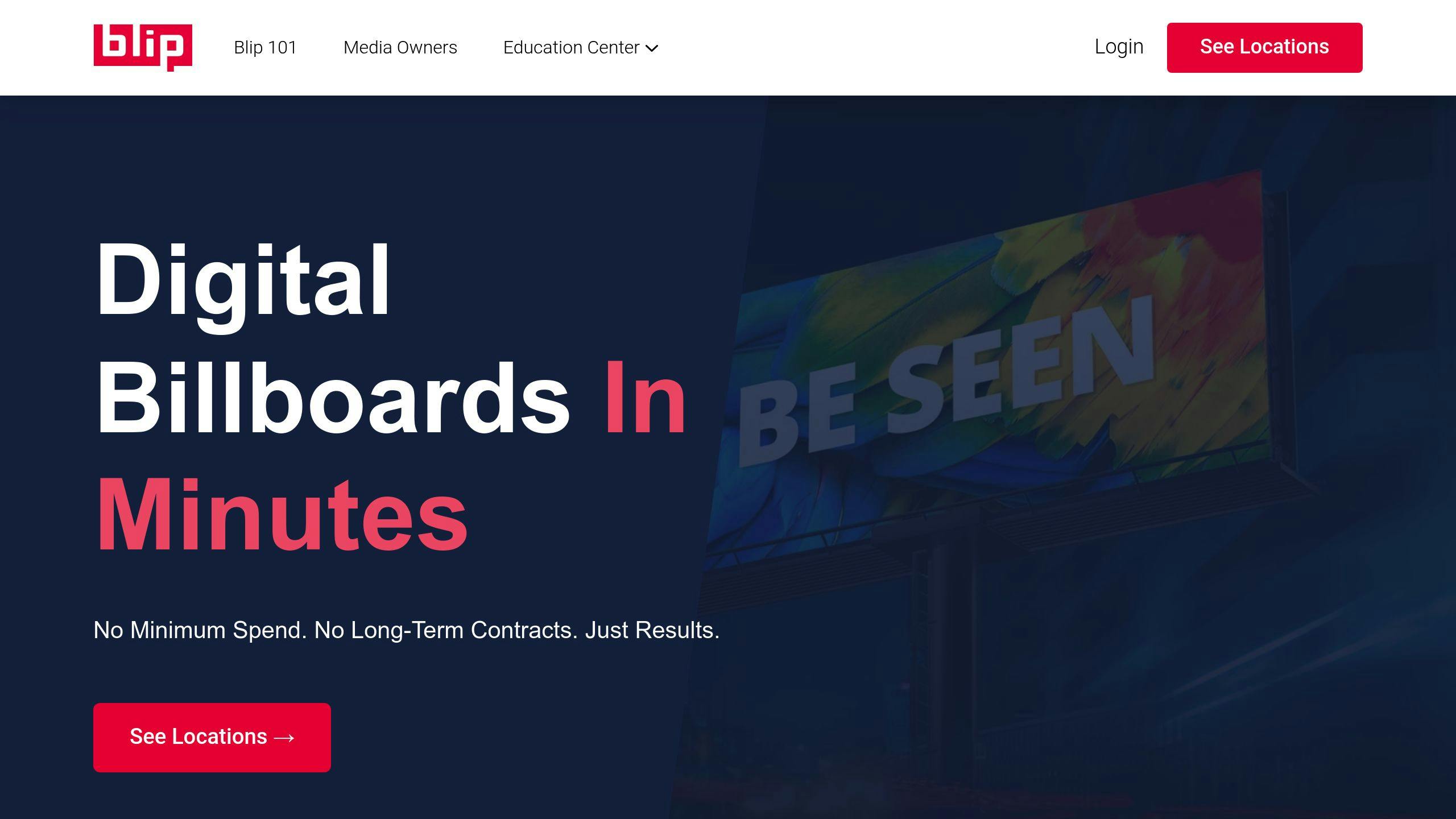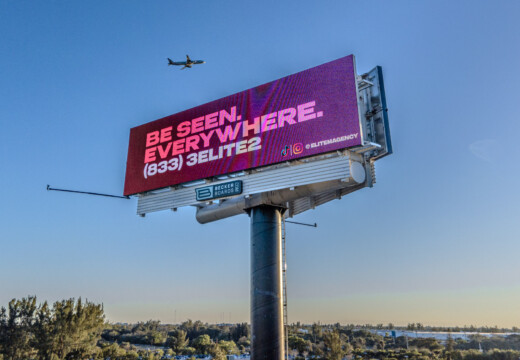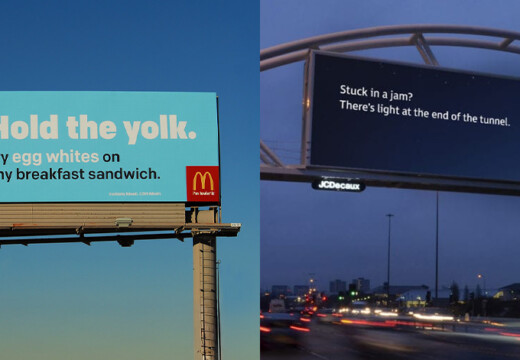Digital billboard advertising is a flexible way to showcase dynamic ads in high-traffic areas. Unlike traditional billboards, these electronic displays allow instant updates, multiple rotating ads, and time-based targeting. Here’s what you need to know to get started:
- Set Clear Goals: Use SMART goals to define your objectives (e.g., brand awareness or sales growth).
- Know Your Audience: Understand demographics, geography, and behaviors to craft tailored messages.
- Pick the Right Locations: Choose high-traffic areas with good visibility, like intersections or shopping centers.
- Design Eye-Catching Ads: Use 7 words or fewer, bold visuals, and clear calls to action (e.g., QR codes).
- Plan Timing and Budget: Schedule ads during peak hours and set a budget that aligns with your goals.
- Track Performance: Use tools like Google Analytics to measure engagement and ROI.
Quick Comparison: Digital vs. Traditional Billboards
| Feature | Digital Billboards | Traditional Billboards |
|---|---|---|
| Content Changes | Instant updates | Manual installation |
| Display Options | Multiple rotating ads | Single static message |
| Cost | Lower upfront | Higher upfront |
| Targeting | Time-based scheduling | Fixed display |
| Maintenance | Digital updates | Physical upkeep |
Start small, test your strategy, and use real-time data to refine your campaign for better results.
Effective Billboard Strategies
1. Set Campaign Goals and Target Market
To run a successful digital billboard campaign, you need to start with clear goals and a solid understanding of your audience. Here’s how to get started.
Write Clear Goals
Focus on setting SMART goals – Specific, Measurable, Achievable, Relevant, and Time-bound. These should tie directly to your business objectives. Are you aiming to boost brand awareness? Drive more foot traffic? Increase sales? Tools like surveys, POS data, or website analytics can help you track your progress along the way.
Understand Your Audience
Get a clear picture of who you’re trying to reach by looking at:
- Demographics: What’s their age, income level, or occupation?
- Geography: Where do they live or commute?
- Behaviors: What are their shopping habits or lifestyle choices?
For instance, if you’re promoting a high-end fitness center, your audience might include health-conscious professionals aged 25-45 who live or work in specific urban areas.
Choose the Right Metrics
Pick metrics that match your campaign goals. Here are a few examples:
- Digital engagement: Website visits
- In-store actions: Visits or coupon redemptions
- Brand impact: Changes in recall rates or customer sentiment
- Sales performance: Revenue growth or conversion rates
Tools like Google Analytics or your POS system can help you gather and analyze this data effectively.
2. Select Billboard Locations
Picking the right spots for your digital billboards is crucial for reaching your audience and achieving your campaign goals. Here’s how to choose locations that work.
Focus on High-Impact Areas
Look for places with heavy foot or vehicle traffic, such as busy intersections, shopping centers, public transit hubs, and business districts. Timing matters too – peak hours can give your ad more exposure. Opt for locations where people naturally pause, like traffic lights, rather than high-speed roads where drivers have limited time to notice your billboard.
The physical setup of your billboard also plays a big role in its effectiveness. Keep these key factors in mind:
| Factor | What to Check | Why It Matters |
|---|---|---|
| Size | Billboard dimensions | Ensures your message is visible |
| Height/Distance | Viewing angle and time | Impacts readability and retention |
| Lighting | Day and night visibility | Keeps your ad effective 24/7 |
Before finalizing a location, use tools like Google Street View to see how your billboard will look in its actual setting. This helps you understand visibility and placement better.
Use Data to Guide Your Choices
Leverage tools like Google Maps, Waze, and Census data to analyze traffic patterns and demographics. These insights can confirm whether your target audience frequents the areas you’re considering . Market research platforms can also provide valuable behavioral data to fine-tune your decisions.
Pro Tip: Consider sharing billboard space with businesses that complement your brand. Split-screen options can reduce costs while keeping your message visible.
Once you’ve locked in the perfect locations, you’re ready to design billboards that grab attention and inspire action.
3. Create Clear Ad Designs
Designing digital billboards that grab attention and deliver your message fast is all about simplicity and impact. With most viewers on the move, your content must stand out and communicate effectively in just a few seconds.
Keep Messages Brief
Your message should be understood in 3 seconds or less . Follow these guidelines to keep your design focused:
| Design Element | Maximum Limit | Purpose |
|---|---|---|
| Words | 7 or fewer | Quick and easy to read |
| Visual Elements | 3 total | Prevent visual clutter |
| Colors | 2-3 main colors | Ensure strong visual contrast |
Stick to one clear idea. Trying to cram too much into a single design can confuse your audience and dilute your message.
Make Text Stand Out
Visibility and readability are key. Use these tips to make sure your text works:
- High-contrast colors that stay easy to read in different lighting.
- Legible fonts that work from various angles and distances.
- Text size that matches the typical viewing distance for your billboard.
Pro Tip: Check how your design looks from different distances and angles to ensure it’s clear on large displays.
Add Action Steps
Make it easy for viewers to remember or act on your ad with simple, direct calls to action:
- Short, easy-to-remember website URLs (ditch the "www.")
- Brief keywords or codes for text responses
- A recognizable brand name that’s easy to search later
Important: URLs should be simple, large enough and positioned for easy viewing from typical distances.
Your ad design should match the goals of your campaign – whether it’s to build awareness, encourage engagement, or drive action. Digital billboards let you update content dynamically, so experiment with different designs and messages to see what works best. Start simple, test often, and refine based on performance data.
Once your designs are ready, the next step is planning when and how often your ads will appear to maximize their impact.
sbb-itb-2e2e93f
4. Set Times and Budget
Once your ad designs are ready, the next step is deciding when and where they’ll make the biggest splash.
Choose the Best Times for Display
Timing is everything. Schedule your ads to match your audience’s routines for the most visibility. Here are some common time slots to consider:
| Time Period | Audience & Purpose |
|---|---|
| Morning Rush (6-9 AM) | Professionals commuting to work |
| Midday (11 AM-2 PM) | Shoppers and local business traffic |
| Evening Rush (4-7 PM) | Commuters and evening shoppers |
| Late Night (9 PM-12 AM) | Nightlife and entertainment seekers |
Pro Tip: Study local traffic patterns and your audience’s habits to fine-tune your display schedule.
Set a Realistic Budget
Digital billboard costs vary widely, from $250 per month in rural areas to $50,000 per month in prime urban spots . Align your budget with locations and times that will maximize your reach and impact.
Try the Blip Platform

Blip’s self-serve platform is a great option for flexible campaigns. With no contracts, real-time control, and a budget starting as low as $0.01 per display, it’s perfect for newcomers looking to test the waters. You can experiment without risk and access thousands of billboard locations.
"Digital billboard advertising should be dynamic and data-driven. Start with a clear budget, but be prepared to adjust based on performance metrics and audience engagement." – Brent Thomson, Blip Co-founder
With your timing and budget sorted, you’re ready to track performance and fine-tune your campaign for even better results.
5. Measure and Improve Results
Tracking and refining your campaign’s performance is an ongoing process. It’s how you ensure your efforts stay effective and relevant. Here’s how you can measure and fine-tune your campaign results.
Set Up Tools to Track Performance
Leverage tools like custom URLs and Google Analytics to monitor key metrics and understand user behavior.
| Tool | Purpose | Key Metrics |
|---|---|---|
| Custom URLs | Identify traffic sources | Click-through rates |
| Google Analytics | Analyze visitor behavior | Time on site, conversions |
Once these tools are in place, you’ll have the data you need to evaluate how well your campaign is performing.
Analyze Your Data
Check your campaign metrics weekly to spot trends and uncover areas for improvement. Focus on these core indicators:
- Views: Understand how many people your campaign is reaching at each location.
- Engagement: Count URL visits to gauge interest.
- Conversion Rates: Track the actions users take after seeing your billboard.
- ROI: Compare costs to conversions to measure the value generated in different areas.
"Real-time data lets marketers track performance and adjust campaigns instantly." – Digital Marketing Institute
Make Adjustments Based on Insights
Use the data to experiment and find what resonates best with your audience:
Optimize Timing
Study your data to identify when engagement is highest. Adjust your display schedule to match these peak hours.
Refine Content
Test variations in messaging, visuals, and call-to-action placement to see what drives the most engagement.
"Digital billboard advertising should be dynamic and data-driven. The key is to continuously analyze performance metrics and make real-time adjustments to maximize campaign effectiveness." – Digital Billboard Association
Next Steps: Start Your Campaign
Now that you’ve outlined your goals, chosen locations, finalized designs, and set a budget, it’s time to pull it all together and launch your campaign. Getting your first digital billboard campaign off the ground takes careful planning. Start small with a test campaign to confirm your strategy before expanding.
Here’s a simple framework to guide your launch:
| Timeline | Action Items |
|---|---|
| Week 1 | Finalize your campaign strategy |
| Week 2 | Confirm billboard locations and schedules |
| Week 3 | Test and approve designs |
| Week 4 | Set up tracking tools and launch the campaign |
To make your launch as effective as possible:
- Use bold, clear visuals that grab attention instantly.
-
Make sure tracking tools are fully operational:
- Custom URLs
- Analytics dashboards
Platforms like Blip can help streamline campaign management and allow for flexibility during testing. Keep a close eye on performance metrics and adjust your approach based on real-time data.
Before you go live, double-check these key items:
- Confirm all tracking tools are working properly.
- Verify display schedules across all locations.
- Prepare alternate creative designs in case adjustments are needed.
- Set up regular intervals to review performance data.
Think of your first campaign as a chance to learn and improve. The key to success in digital billboard advertising is ongoing fine-tuning based on what the data tells you.
FAQs
Where should billboards be placed?
Placing billboards in areas where traffic slows down or people tend to pause naturally – like intersections – is key to making your ad more noticeable. Here are some common locations and their benefits:
| Location Type | Benefits |
|---|---|
| Major Highways | Repeated exposure for commuters |
| City Centers | High levels of foot and car traffic |
| Business Districts | Reaches a professional audience |
When choosing a location, consider these factors:
- Viewing Distance: Make sure the billboard is visible from different angles.
- Traffic Flow: Look for spots where vehicles slow down or stop.
- Peak Hours: Align your ad’s visibility with times when the most people are present.
Using tools like traffic analysis platforms can help confirm you’re reaching the right audience. Billboards near intersections or highway merges often perform better because people spend more time looking at them during traffic delays.
Costs for billboard placement can vary widely. High-demand urban spots might cost up to $50,000, while rural locations can start as low as $250 .


